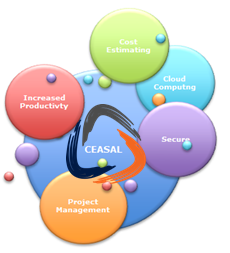BIM (Building Information Modeling) is the life-cycle management of the built environment supported by digital technologies. As such it is a process of collaboration, continuous improvement, transparency, and integration. 3D distractions aside, achieving optimal return-on-investment (ROI) on BIM requires focus upon change management, first and foremost. Ad-hoc business practices, traditional construction delivery methods, and legacy software must be cast aside.
BIM is managing information to improve understanding. BIM is not CAD. BIM is not 3D. BIM is not application oriented. BIM maximizes the creation of value. Up, down, and across the built environment value network. In the traditional process, you lose information as you move from phase to phase. You make decisions when information becomes available, not necessarily at the optimal time. BIM is not a single building model or a single database. Vendors may tell you that everything has to be in a single model to be BIM. It is not true. They would be more accurate describing BIM as a series of interconnected models and databases. These models can take many forms while maintaining relationships and allowing information to be extracted and shared. The single model or single database description is one of the major confusions about BIM.(http://4sitesystems.com/iofthestorm/books/makers-of-the-environment/book-3/curriculum-built-world/categories/introductionbim-integration/)
The principles of BIM:
- Life-cycle management: Process-centric , longer term planning and technologies that consider total cost of ownership, support decision making with current, accurate information, and link disparate knowledge domains and technologies.
- Collaborative Delivery Processes: Integrated Project Delivery (IPD) procurement and construction delivery processes that consider and combine the knowledge and capabilities of all stake holders – Owners, AEs, Contractors, Business Product Manufacturers, Oversight Groups, Service Providers, and the Community. (i.e. IPD, Job Order Contracting/JOC)
- Standards and Guidelines: Common glossary of terms, metrics, and benchmarks that enable efficient, accurate communication on an “apples to applies” basis.
- Collaborative, Open Technologies and Tools: Cloud-based systems architectures that enable rapid, scalable development, unlimited scalability on demand, security, real-time collaboration, and an full audit trail.
(Johnson et al. 2002) – There is an interrelationship between business goals, work processes, and the adoption of information technology. That is, changes in business goals generally require revising work processes which can be enhanced further by the introduction of information technology. But we also recognized that innovations in information technology creates possibilities for new work processes that can, in turn, alter business goals In order to understand how information technology influences architectural practice it is important to understand all three of these interrelated elements.
Business Goals… Work processes …. Information technology
require/create require/create require/create
(Via http://www.4Clicks.com – Premier cost estimating and efficient construction project delivery – JOC, SABER, IDIQ, SATOC, MATOC, MACC, BOCA, BOA. Exclusively enhanced 400,000 RSMeans Cost Database with full descriptions and modifiers.)
Sustainability – “to create and maintain conditions, under which humans and nature can exist in productive harmony, that permit fulfilling the social, economic, and other requirements of present and future generations.” – US Executive Order 13423



